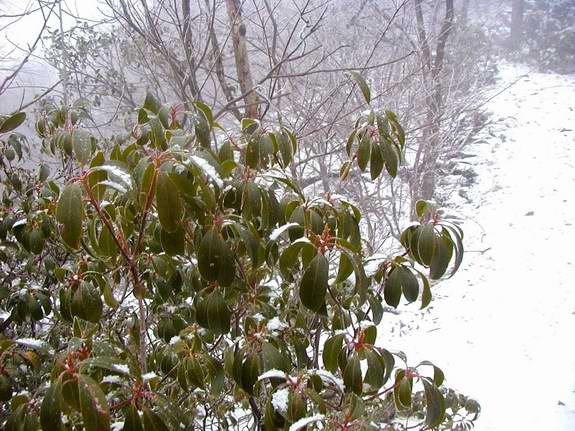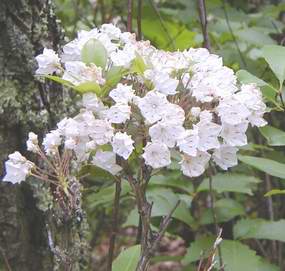|
Common
Name: Mountain Laurel,
Calico-bush, Sheepkill Scientific Name: Kalmia latifolia (Kalmia for Peter Kalm, a Finnish botanist sent to the New World by Carl Linnaeus, the originator of botanical taxonomy. Latifolia means wide-leafed) Mountain Laurel is an evergreen that ranges in size from shrubs one meter in height to small trees with short, crooked trunks up to ten meters in height. It is characterized by dark green alternate oval leaves and five-sided pink and white blossoms that bloom early in the spring. Potpourri: Mountain Laurel is a Native American species that was first introduced to Europe in 1726 by Mark Catesby who discovered it during his travels in Virginia. Peter Kalm discovered the poisonous properties of the foliage when some sheep belonging to his expedition almost died from it, giving it the common name sheepkill.
Mountain laurel is toxic to humans and most grazing animals. Deer, however, are able to tolerate it. The grayanotoxins cause salivation and a burning sensation in the mouth followed by diarrhea, muscular weakness, convulsions and impaired vision. The honey made from the plant by bees is also toxic. The name calico-bush comes from the color of the pink trimmed white blossoms. The anthers (pollen producing tips of stamens) are tucked into pockets on the inner side of the petals. When touched by an insect, they spring out to scatter the pollen on the insect's body. |

